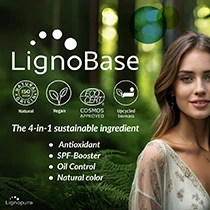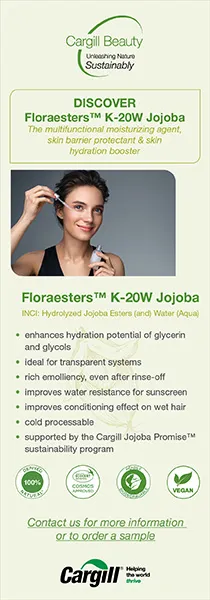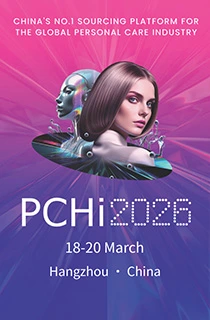Democratizing digital access: Perfect Corp. champions virtual try-on to reduce beauty packaging waste

11 May 2023 --- With “Meaningful connections” named as one of Innova Market Insights’ top packaging trends for 2023, PackagingInsights speaks to Alice Chang, CEO and founder at Perfect Corp., about how technology can reduce packaging waste and drive environmental sustainability. The leading AI and AR technology solutions provider is helping beauty and fashion businesses achieve their environmental goals by employing virtual try-on to minimize product returns.
“Today’s consumers are prioritizing and supporting brands that work to reduce their carbon footprint and implement environmentally-conscious business practices. However, with the beauty industry alone creating 120 billion units of plastic packaging each year, brands are under increased pressure to deliver on sustainability and ESG [environmental, social and governance] agendas,” Chang tells us.
“AI/AR technology has quickly become an essential tool for cosmetics brands looking to reduce product and plastic waste significantly. AI/AR-powered virtual-try-on (VTO) solutions offer consumers an innovative digital platform to discover products. This technology also eliminates the need for physical product samples, which greatly reduces the waste generated by cosmetics brands.”
Furthermore, Chang highlights that VTO helps consumers find the right products and cosmetic shades, minimizing the waste created from product returns. “Embracing planet-friendly solutions like AI/AR tech is key for brands to become more sustainable and eco-friendly,” she underpins.
 VTO helps consumers find the right products and cosmetic shades, minimizing the waste created from product returns.According to Innova Market Insights, consumers exist in a connected world and packaging is increasingly seen as a valuable platform for digital engagement. Technologies like QR codes, NFC and AR have begun to emerge in recent years as cost-effectiveness and consumer appetite grow.
VTO helps consumers find the right products and cosmetic shades, minimizing the waste created from product returns.According to Innova Market Insights, consumers exist in a connected world and packaging is increasingly seen as a valuable platform for digital engagement. Technologies like QR codes, NFC and AR have begun to emerge in recent years as cost-effectiveness and consumer appetite grow.
How can AI/AR aid packaging waste management?
Chang: AI/AR VTO technology allows customers to try beauty products with true-to-life results in seconds flexibly. This advanced technology will enable brands to reduce the waste created from product sampling as customers can sample unlimited product shades through a digital platform. Moreover, as virtual try-on allows customers to try many shades in seconds, they are more likely to find the best shades for their needs and feel confident about their purchasing decisions. As a result, this reduces item returns, reducing carbon emissions and waste created from the returns process. VTO has had a significant impact on the ESG efforts of our brand partners. One of our clients, the Japanese hair color brand Kao Corporation, recently conducted a study and found that through our virtual hair-color try-on experience, the brand could reduce plastic waste by 56 tons per year.
How can beauty manufacturers leverage connected packaging to enhance brand engagement?
Chang: Many of our brand partners leverage connected packaging and AR-powered virtual try-on technology to engage customers while shopping in-store. The brand packaging often features a QR code for VTO experience. This is an excellent way to captivate and entertain shopping consumers by bringing products to life in a digital atmosphere. This interactive and entertaining addition to the retail journey allows the consumer to see how the product will appear when worn, bringing a personalized experience.
How would you quantify cosmetic packaging waste reduction via VTO?
Chang: Virtual try-on technology can significantly reduce carbon emissions in the beauty industry, and formulas are available to help measure its impact. As per a study titled “Sustainable Lipstick: Using AR and AI to Reduce Carbon Footprint in the Cosmetics Industry,” by Nathan Liu, Harker Science Research Symposium, assuming a single lipstick can be used for 40 applications, with consumers across the beauty industry completing an average of 10 billion VTOs yearly, this is equivalent to 2,500,000 lipsticks, reducing the waste created by 2,500,000 lipsticks each year equals 250,000 Kg CO2 e (carbon emissions). Brand packaging can integrate a QR code for VTO experience landing page.
Brand packaging can integrate a QR code for VTO experience landing page.
How is Perfect Corp. leveraging its brand partnerships to minimize the beauty industry’s packaging waste?
Chang: We partner with over 500 brands and beauty retailers globally. With some of the world’s most iconic and influential beauty brands adopting Perfect Corp.’s virtual try-on technology, we are proud that our technologies are helping transform the consumer experience and also helping to create a more sustainable future for the industry. As VTO technology becomes table stakes in the beauty industry, the retail space will continue to reduce carbon emissions and product waste to build a better tomorrow.
How exactly can brands be eco-friendly using AI/AR without greenwashing?
Chang: Customers seek to align themselves with brands making strides to positively impact the environment and promote a more sustainable future. AR and AI solutions like VTO are practical and seamless technologies that are easily implemented. This tech presents an excellent opportunity for companies to make an impactful change and drastically reduce product waste, with tangible results.
What are the future areas of expansion for Perfect Corp.?
Chang: We will continue to drive AI/AR technology to solve consumer pain points and create more seamless retail experiences for all. Our mission is to democratize access to digital innovation across industries. We’ve made exciting strides in developing solutions for the dermatology and medspa space and the fashion and luxury jewelry industries. The potential for AI/AR technology is vast. We know that the widespread adoption of these technologies will lead to reduced product waste and more sustainable business operations across the retail landscape.
By Radhika Sikaria












